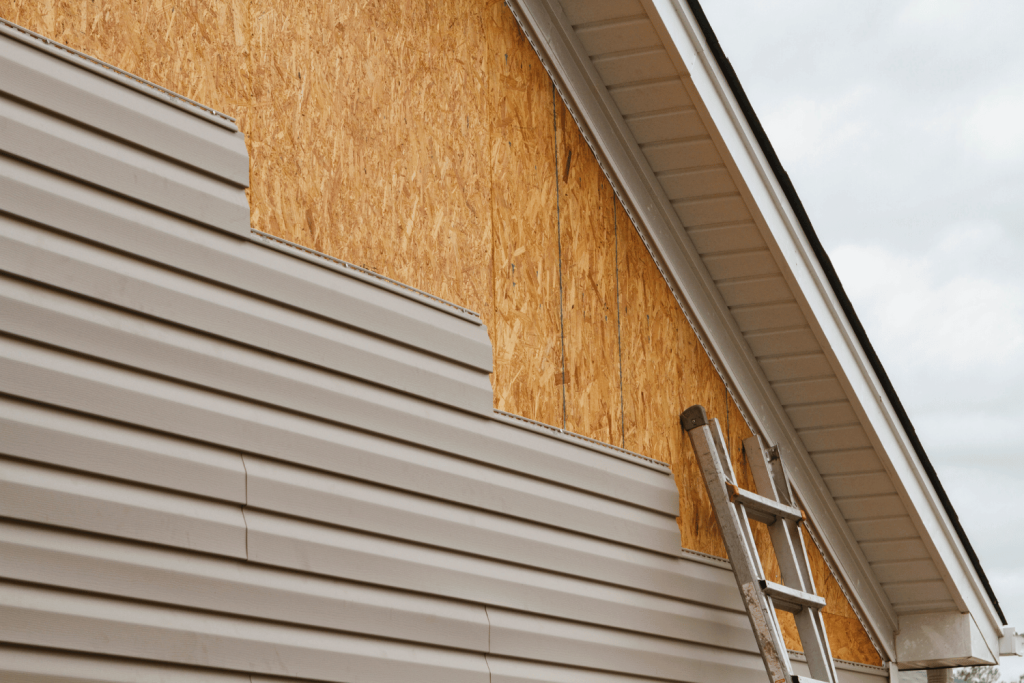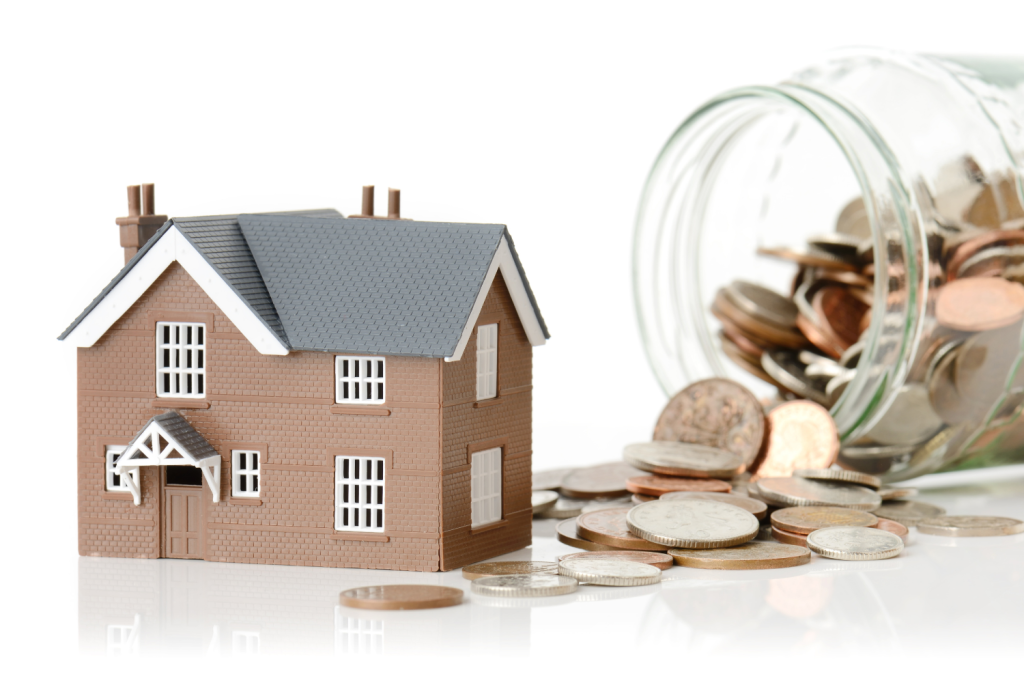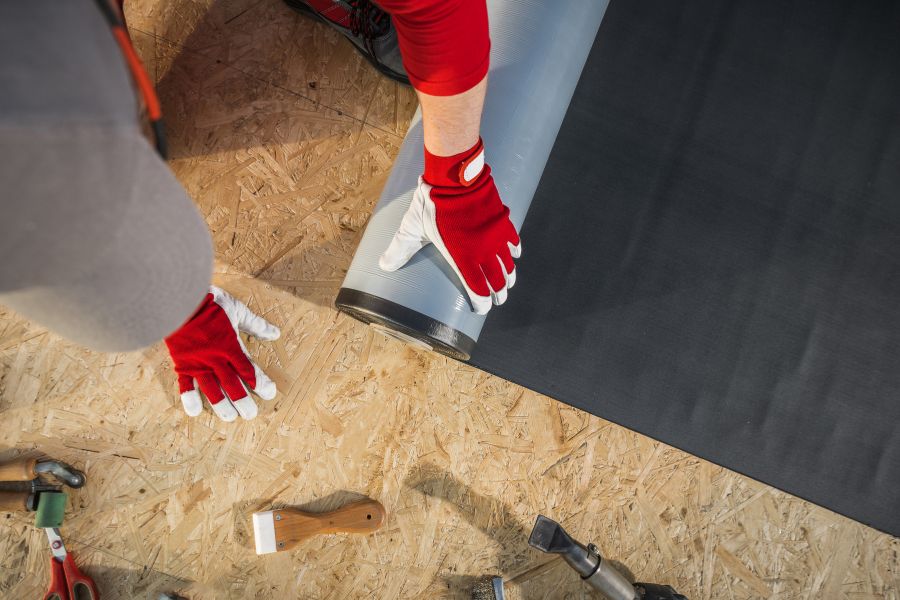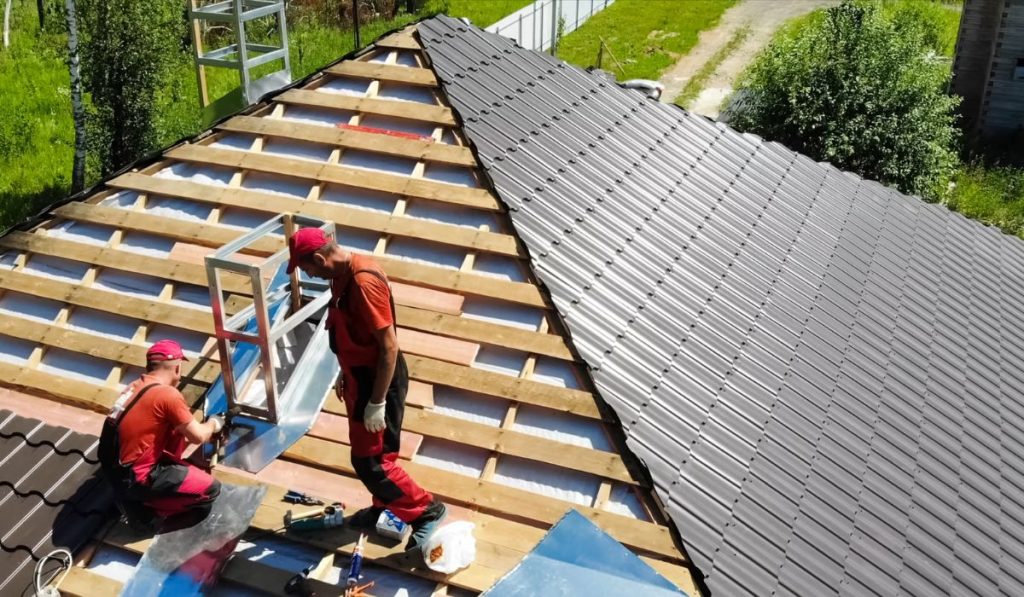Thinking about new siding? It’s a game-changer for your home’s look and protection. From vinyl to wood to fiber cement, each type comes with its own cost. If you’ve ever wondered about the clapboard siding definition, it refers to the classic overlapping wooden boards often seen on traditional homes.
This guide breaks down the options, pricing factors, and what you can expect to spend so you can plan smartly and boost your home’s curb appeal with confidence.
How much does siding cost?
Siding costs vary depending on material. Vinyl siding can cost between $3,000 and $10,000 for a 1,500 sq ft home, while options like wood or fibre cement can cost more for premium finishes.
Key Takeaways
- The cost of siding varies based on materials, size of the home, and location.
- Vinyl is generally the most affordable option, while wood and fibre cement are more expensive.
- Professional installation costs can significantly increase the total price of the project.
Factors That Affect Siding Costs

Several factors influence the cost of siding, ranging from the material type to the size of your home.
Below, we’ll explore these key factors so you can better estimate the total cost of your siding project.
1. Material Type
The material you choose for your siding will have the most significant impact on the overall cost.
Each material comes with its own price point, benefits, and maintenance needs. Here are some common types of siding:
2. Vinyl Siding
This is one of the most popular and affordable options. It’s durable, low-maintenance, and comes in various colours and styles, making it a top choice recommended by many Yukon OK siding contractors. Homeowners can also consult Local siding contractors Yukon to compare options and timelines.
Vinyl siding typically costs between $2 and $7 per square foot.
3. Wood Siding
Wood offers a classic, natural look, but it requires more maintenance and care than vinyl.
Depending on the type of wood (cedar, pine, etc.), the cost can range from $5 to $10 per square foot.
4. Fibre Cement Siding
This is a durable, fire-resistant option that mimics the look of wood. It tends to be more expensive than vinyl, costing anywhere from $6 to $12 per square foot. However, for homeowners exploring quality siding in Newcastle OK, this material offers a long-lasting, low-maintenance solution that enhances curb appeal.
However, it’s highly durable and requires minimal maintenance.
5. Metal Siding
Metal siding, including aluminium and steel, offers modern aesthetics and longevity.
Prices for metal siding usually fall between $7 and $14 per square foot, depending on the quality and style.
6. Stone and Brick Veneer
These premium materials are the most expensive, with prices ranging from $10 to $30 per square foot.
While they are incredibly durable, they can be out of reach for many homeowners due to their high cost.
7. Size of the Home
The size of your home plays a big role in determining the total cost of siding installation. Larger homes will require more material and labour, increasing the overall price.
For example, a 2,000-square-foot home will require more siding material than a 1,200-square-foot home.
Average Cost for 1,500 to 2,000 Square Feet: For a typical home of this size, siding can cost anywhere from $3,000 to $14,000, depending on the material you choose.
Larger Homes: For homes over 3,000 square feet, the cost can increase to $15,000 or more, especially if you’re opting for premium materials like fibre cement or stone.
Recently I published a post named How many pieces of siding in a square. If you are interested, you must check that out and I’m sure you’ll find a lot of helpful info in the content.
8. Labour and Installation Costs
Labour costs can be a significant portion of the total cost of installing siding. Professional installation ensures that the siding is properly installed, weatherproofed, and sealed.
The cost of hiring professionals can vary based on location, the complexity of the job, and the material chosen.
Labour Costs: On average, you can expect to pay anywhere from $1 to $4 per square foot for installation. If you choose a more complex material, like stone or brick veneer, the installation costs can be higher due to the expertise required.
DIY Installation: Some homeowners choose to install siding themselves to save money. While this can reduce costs, it’s important to consider the skill and time required for the job.
Improper installation can lead to long-term issues, including water damage and poor insulation.
9. Location and Accessibility
Your location plays a role in the final price. In some areas, materials and labour may cost more due to higher living costs or the availability of local contractors.
For example, in major cities like New York, Los Angeles, or San Francisco, prices are typically higher due to demand and the cost of living.
10. Local Contractors
Hiring local contractors can help reduce installation costs. It’s essential to get multiple quotes from contractors in your area to ensure you’re getting a competitive price.
Cost Breakdown by Material


Now that we’ve covered the factors that influence cost, let’s dive into the specifics of how much you can expect to pay for siding materials.
Vinyl Siding
Vinyl siding is known for its affordability and low maintenance. It’s the most budget-friendly option, which makes it a popular choice for homeowners.
Material Costs: $2 to $7 per square
Total Cost for a 2,000-Square-Foot Home: $4,000 to $14,
Pros: Low-maintenance, versatile, and available in many
Cons: Can be less durable than other materials, may fade over
Wood Siding
Wood siding is a beautiful option for homeowners who want a natural, rustic look. However, wood siding requires regular maintenance, including painting and sealing. If you’re wondering can you paint siding to refresh its appearance or protect it from the elements, the answer is yes—with proper preparation and the right materials, painting wood siding can significantly extend its lifespan and enhance curb appeal.
Material Costs: $5 to $10 per square foot
Total Cost for a 2,000-Square-Foot Home: $10,000 to $20,000
Pros: Aesthetic appeal, renewable material
Cons: High maintenance, susceptible to rot and pests
Fibre Cement Siding
Fibre cement is a durable, low-maintenance material that offers a similar look to wood. It’s ideal for homeowners looking for both aesthetics and durability.
Material Costs: $6 to $12 per square foot
Total Cost for a 2,000-Square-Foot Home: $12,000 to $24,000
Pros: Long-lasting, fire-resistant, and available in various styles
Cons: Higher upfront cost, heavier than other materials
Metal Siding
Metal siding, including steel and aluminium, is a durable and modern option that offers great protection against the elements.
Material Costs: $7 to $14 per square foot
Total Cost for a 2,000-Square-Foot Home: $14,000 to $28,000
Pros: Durable, low-maintenance, resistant to weather and pests
Cons: Higher initial cost, can dent or scratch easily
Stone and Brick Veneer
Stone and brick veneer are premium options that offer a timeless, high-end look for your home. They are durable and require minimal maintenance.
Material Costs: $10 to $30 per square foot
Total Cost for a 2,000-Square-Foot Home: $20,000 to $60,000
Pros: Extremely durable, excellent insulation, high-end aesthetic
Cons: Very expensive, can be overkill for some homes
How to Save Money on Siding Installation


If you’re looking to enhance the exterior of your home but have a tight budget, there are plenty of ways to save money without sacrificing quality or aesthetic appeal.
Siding plays a significant role in protecting your home and improving its curb appeal, so getting it done right is essential.
Fortunately, you can make strategic decisions that will help reduce your overall costs.
Here are a few practical tips on how to save money on siding installation without compromising the look or quality of your home.
Choose a More Affordable Material
One of the most effective ways to save money on siding installation is by opting for more affordable materials.
While premium materials like wood, stone, or brick offer a higher aesthetic value and durability, vinyl siding offers the best value for your money.
Vinyl siding is a popular choice due to its low initial cost, durability, and ease of maintenance.
Vinyl siding comes in a wide range of colours and textures, which means you can still achieve an attractive appearance without breaking the bank.
In fact, modern vinyl siding closely mimics the look of more expensive materials like wood or stone, providing you with the aesthetic appeal you desire while keeping costs down.
In addition to affordability, vinyl siding is resistant to rot, insects, and extreme weather conditions, meaning you’ll save money in the long run with fewer repairs and replacements. That’s why many homeowners turn to siding companies in Midwest City OK to take advantage of this durable and cost-effective option. You can also price out materials with Affordable siding contractors Midwest City to keep the project on budget.
By choosing vinyl over higher-end materials, you can achieve a clean, modern look without the hefty price tag.
Other affordable siding materials include fibre cement and engineered wood, which also offer good durability and an upscale appearance at a fraction of the cost of traditional wood or stone.
While these options may be slightly more expensive than vinyl, they still represent a solid value for your money.
Get Multiple Quotes
When it comes to siding installation, the cost can vary widely depending on the contractor, materials, and scope of work.
That’s why it’s crucial not to settle for the first quote you receive.
By getting quotes from multiple contractors, you can compare pricing, materials, and services to ensure you’re getting the best deal possible.
When requesting quotes, be sure to ask for detailed estimates that outline the costs of materials, labour, and any additional fees for disposal or clean-up. This is especially important when dealing with services like the Siding Cleaning process, where thoroughness and proper technique can significantly impact the final results.
This transparency will give you a clearer understanding of the total cost of the project.
Don’t be afraid to ask for clarification if certain charges seem unclear, and make sure all aspects of the job are covered in the estimate.
Also, don’t forget to ask contractors about warranties or guarantees on both the materials and the installation.
A good warranty can save you money in the future if there are any issues with your siding or installation.
It’s important to remember that the cheapest option isn’t always the best. While saving money is important, you don’t want to compromise on the quality of the materials or the craftsmanship.
So, when comparing quotes, balance the price with the reputation and experience of the contractor.
Look at their previous work, read reviews, and ensure they have the necessary certifications and licenses to carry out the job.
Consider DIY Installation
If you’re comfortable with home improvement projects and have the necessary tools and skills, consider installing the siding yourself.
DIY installation can save you a significant amount of money on labour costs, and many homeowners find the process rewarding and fulfilling.
Before you take on the project, be sure to carefully assess your abilities and the amount of time you can commit to the installation.
While installing siding isn’t as difficult as some home improvement projects, it still requires precision, attention to detail, and the proper tools.
If you’re unsure, consider watching tutorial videos or reading guides online to get familiar with the process.
One of the main reasons people hesitate to tackle siding installation themselves is the potential for mistakes.
To avoid this, make sure you take your time and follow every step of the installation process.
Proper preparation, including measuring and cutting the siding correctly, will ensure that everything fits seamlessly and looks professional.
If you do choose to go the DIY route, you can still buy the materials from a reputable supplier to ensure you’re using quality products.
Many siding manufacturers offer DIY-friendly installation instructions, and some even have helpful customer support to assist you if you run into issues during the installation.
However, if you’re not confident in your abilities or if the project feels too overwhelming, it’s okay to hire a professional contractor.
Remember, while you’ll save money doing it yourself, the cost of hiring a skilled professional is often worth the peace of mind, especially when dealing with large or complex projects.
Frequently Asked Questions
1. How much does it cost to install vinyl siding?
The cost of installing vinyl siding typically ranges from $4,000 to $14,000 for a 2,000-square-foot home, depending on the quality of the material and the complexity of the installation.
2. What’s the difference between vinyl and fibre cement siding?
Vinyl siding is more affordable but may not last as long as fibre cement, which is more durable and fire-resistant but comes at a higher cost. For expert advice on choosing between the two, consulting top siding installers in Mustang OK can help you make the best decision for your home and budget.
3. How long does siding last?
Depending on the material, siding can last anywhere from 10 to 50 years. Vinyl siding typically lasts 20 to 40 years, while wood and fibre cement can last up to 50 years with proper maintenance.
Conclusion
The cost of siding varies depending on the material, size of your home, and other factors such as installation complexity and location.
Vinyl siding offers the best value for budget-conscious homeowners looking to install vinyl siding on a house, while materials like fibre cement, wood, and stone provide more durability and aesthetic appeal at a higher cost.
When choosing siding, consider your climate, maintenance requirements, and the long-term benefits of each material to make the best decision for your home.
With proper installation and care, your new siding can enhance your home’s curb appeal and provide lasting protection for years to come.





